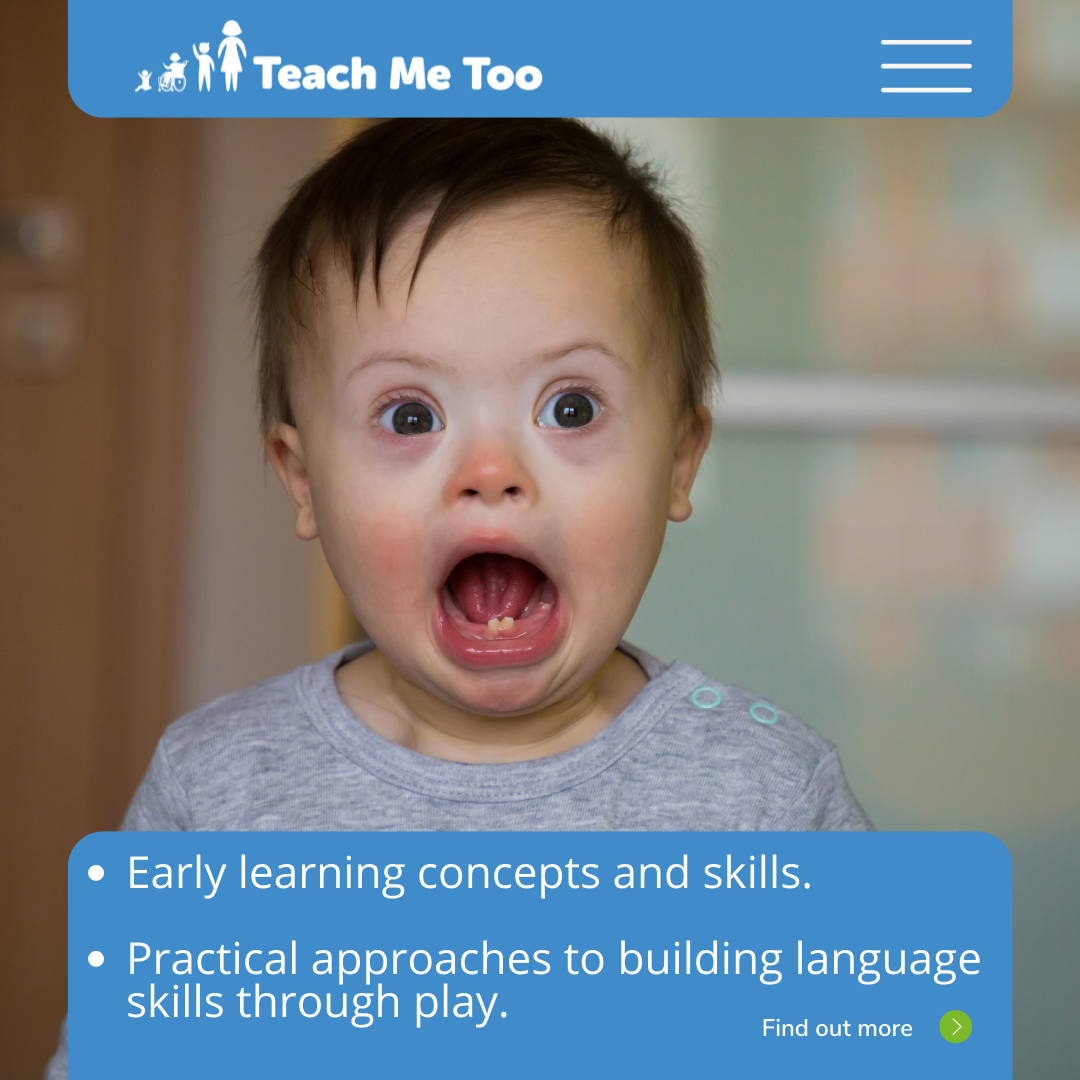Communication and Non-Verbal Skills
Babies with Down's syndrome often enjoy communicating and make good use of non-verbal skills in social situations
In the early years, language skills of children with Down's syndrome tend to develop more slowly when compared to their peers. However, there is a common pattern of strengths that, when understood, can help inform teaching practices and their learning. According to child development research, children with Down's syndrome display a significant strength in non-verbal social interaction skills. (1)
These non-verbal skills, such as babbling, gesture and eye contact can allow the child to communicate and interact fully with family and friends in all social situations. They love to copy, imitate, and point and in doing so they develop their communication skills.
Some studies do suggest that high-quality teaching interventions and support can improve development for children with Down's syndrome (2) which is why these early years can be so important.
This strength continues throughout their learning journey, and we should consider this when supporting a child or adult with Down's syndrome. Always consider how you communicate and follow our top tips:
1. Always gain the attention of the listener before you try to communicate.
2. Can they see you? – Don't forget that all people with Down's syndrome have reduced visual acuity. This means things appear more blurred than for their typical peers, even if their vision is corrected with glasses. So, if they wear glasses, make sure they are on and even more importantly, they are CLEAN! (If you know, you know).
3. Use songs and rhythms to engage your child. They enjoy communicating, so use those moments to talk through your play, sing songs, or clap out rhythms.
4. Last but not least! Don't underestimate the power of signing! Choose the signing system most suited to your family; this could be Makaton, Signalong, or other signing systems available. Signing is not just about expressing yourself; it really helps a child's comprehension and supports vocabulary building. Stick with it, it's worth it in the end!
1. (PDF) Nonverbal Communication Skills in Down Syndrome Children (researchgate.net)
2. Buckley, S.J. (in press) Teaching children with Down syndrome to talk . Kirkby Lonsdale, UK: Down Syndrome Education International


